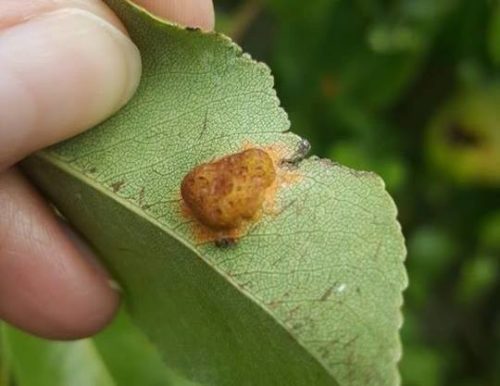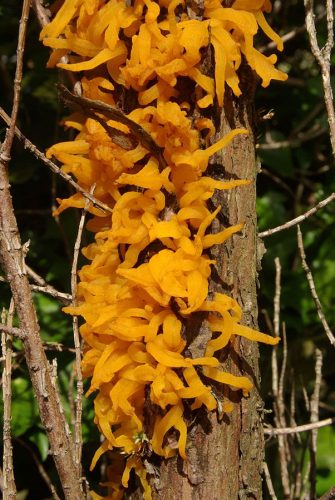Tongues of Fire lives on pear trees and junipers, among others.
Do not confuse with:
Pear blister mite
Tongues of Fire (Gymnosporangium clavariiforme). Tongues of Fire is a plant disease caused by pathogenic fungi of the class of rusts (Pucciniales). Tongues of Fire lives on the pear tree and juniper. Tongues of Fire overwinters in the juniper where the spores are also formed. The roots of Tongues of Fire penetrate the juniper and affect the tree. Orange tentacle-shaped fungi form on the branches. The wind blows the spores on pear trees. In pears, Tongues of Fire causes yellow spots with orange edges on the leaves, growing into an orange bump.
Despite the obvious connection between juniper and pear trees, Tongues of Fire also occurs where the two trees are not in each other’s vicinity.

Where to find
- Juniper
- Quince
- Hawthorn
- Pear tree
Control
If possible, remove the affected parts of the juniper. These can be recognized by the thickened and orange-colored branches.
Remove infested pear t
Prevention
Do not plant junipers near pear, hawthorn and quince. Remove any diseased junipers nearby (< 0.5 km).

